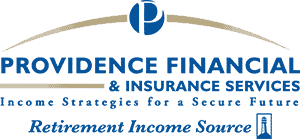Investing isn’t something you throw together at the last minute. It takes thoughtful research, planning and monitoring to successfully invest and grow your assets. That’s why we’ve put together several simple questions to help you create an investment plan.
The first, of course, is: what is the purpose of your investments? Having a main goal in mind is the starting point to any well-planned investment. Without a main goal your investments may fall flat. Are you investing to supplement your current income? Are you investing to build a nest egg? Are you investing for personal and professional growth? Assess your current situation by including factors such as your age, income, amount of debt, and personal investment knowledge.
Next, ask yourself when you will need to use the money. Establishing a solid and reasonable timeframe that you can adhere to is crucial to the success of your investments. This shouldn’t be too hard if you’ve answered the first question. If the main goal for your investments is to create some quick cash in the next few years to purchase a car or down payment for a house, you’ll have a much different investment plan than if your main goal is to start a nest egg by putting money into a 401(k) for the next twenty-plus years. Of course, you may have more than one investment goal, and regardless of whether it’s short or long term, you’ll want to establish a solid timeframe to work around.
The next question is if you understand the risk that comes with investing. Each investment you make will come with a formulated risk, and you need to determine which ones are right for you. Generally speaking, the younger you are, the more risk you should be able to take. However, that doesn’t mean you should be buying stocks like they’re going out of style. The safest investment is one that guarantees you will not lose your principal. The riskiest investment is buying an individual stock or bond, which has the potential of becoming worthless. There’s one word that will help you with your investment risks: diversification. If your personal investment knowledge is even less than average, I would highly recommend calling upon an expert for advice.
Another important question lies in how much money you have to invest, and how often. Do you have a lump sum you’d like to invest, or would you rather allocate your money in regular monthly contributions? You must answer this question before even choosing an investment. Why? Because most investment choices have minimum investment amounts. If you have a small amount to invest you’ll want to choose wisely. If you have a large sum to invest, you’ll want to diversify and choose a variety of investments to minimize risk. You also want to smart in determining an amount that will still allow you to live comfortably; some investments come with fines or deductions if you pull your cash too soon. Don’t put yourself in danger by biting off more than you can chew.
The final question is: have you done your investment research? You can’t create a good investment plan without understanding the investment choices available to you. Don’t buy into the first investment product presented to you because it’s new and shiny. Create a thorough list of investment choices that all meet the requirements set forth by the questions you’ve already answered in creating an investment plan. Take the time to do your homework and map out the pros and cons of each choice. You’ll not only be confident in our choice, but you’ll also have peace of mind in knowing that you did everything possible to set your money, and your future, up for success.

